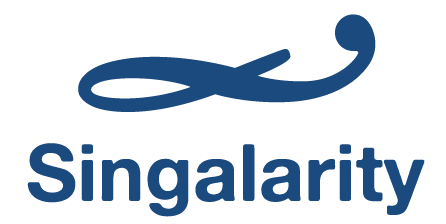-
Products
- SAS - Singalarity Authentication Server & Token Management Server
- TAE - Troubleshooting Analytic Engine
- FSOC - Forensic Security Operations Center
- ST Engineering Data Diode - Secured Data Transfer Gateway
- Rnext - Business Management Platform
- Rnext - QRPay Intra-Gateway
- Rnext - Fintech Solution Platform
- Services
- Industries
- News & Analysis
- Opportunities
- About us
Customer Acquisition Cost and your Company’s Fate
1. What the CAC
The customer acquisition cost (CAC or CoCA) means the price you pay to acquire a new customer. For example, in terms of the upstream oil market, if an oil supply is in an area requiring heavy infrastructure investments, the amount applied to extract the oil may be greater than its market price per barrel.
Investors view Internet-based companies through the same lens. They are concerned with the current relationship, not on future promises of improving the metric, unless they can be justified.
The other party interested in the metric is an internal operations or marketing specialist. They use it to optimize the return on their advertising investments. In other words, if the costs to extract money from customers can be reduced, the company’s profit margin improves and it makes a larger profit.
Then, investors are more interested in providing the company with the resources it needs, partners are more committed to growth, and the company can use the improved profit margins to pass the value to its customers for a greater market position.
2. How You Can Measure CAC
Basically, the CAC can be calculated by simply dividing all the costs spent on acquiring more customers (marketing expenses) by the number of customers acquired in the period the money was spent. For example, if a company spent $100 on marketing in a year and acquired 100 customers in the same year, their CAC is $1.00.
There are caveats about using this metric that you should be aware of when applying it. For instance, a company may have made investments on marketing in a new region or early stage SEO that it does not expect to see results from until a later period. While these instances are rare, it may cloud the relationship when calculating the CAC.
It is suggested that you perform multiple variations to account for these situations. However, we will provide some examples of calculating the CAC metric in its most pragmatic and simple form with two examples. The first company (Example 1) has a poor metric.
Example 1: An ecommerce company
In this example, we take a fictitious ecommerce company that sells organic food products. The company spent $100,000 on advertising last month, and its marketing team says 10,000 new orders were placed. This suggests a CAC of $10, a figure that has no meaning in itself.
If a Mercedes-Benz dealer has a CAC of $10, the management team will be delighted when looking at the year’s financial statements.
However, in the case of this company, the average order placed by customers is $25.00, and it has a markup of 100% on all products. This means that on average, the company makes $12.50 per sale and generates $2.50 from each customer to pay for salaries, webhosting, office space, and other general expenses.
While this is the quick and dirty calculation, what happens if customers make more than one purchase over their lifetime? What if they completely stop shopping at brick and mortar grocery stores and buy from only this company?
The purpose of customer lifetime value (CLV) is specifically designed to resolve this. You can find a CLV calculator by simply searching in your favorite search engine. In general, this metric helps you form a more accurate understanding of what the customer acquisition cost means to your company.
A $10.00 customer acquisition cost may be quite low if customers make a $25.00 purchase every week for 20 years! However, in this ecommerce company, they are struggling to keep customers and most of the customers make only one purchase.
3. How You Can Improve CAC
Let’s face it, we all wish that our company was like Example 2. The reality is that our advertising campaigns can always be more effective, customer loyalty can always be improved, and more value can always be extracted from consumers. There are several methods your business can use to improve its CAC in its industry:
- Improve on-site conversion metrics: One may set up goals on Google Analytics and perform A/B split testing with new checkout systems in order to reduce shopping cart abandonment rate and improve the landing page, site speed, mobile optimization, and other factors to enhance overall site performance.
- Enhance user value: By the highly conceptual notion of “user value,” we mean the ability to generate something pleasing to the users. This may be additional feature enhancements/qualities that consumers have expressed interest in. It may be implementing something to improve the existing product for greater positioning, or developing new ways to make money from existing customers. For instance, you may realize that customer satisfaction ratings have a positive correlation with retention rate.
- Implement customer relationship management (CRM): Nearly all successful companies that have repeat buyers implement some form of CRM. This may be a complex sales team using a cloud-based sales tracking system, automated email lists, blogs, loyalty programs, and/or other techniques that capture customer loyalty.
Next chapter we will see the relation of CLV and CAC and how to balance them to get maximize revenue for your company.
Share:

